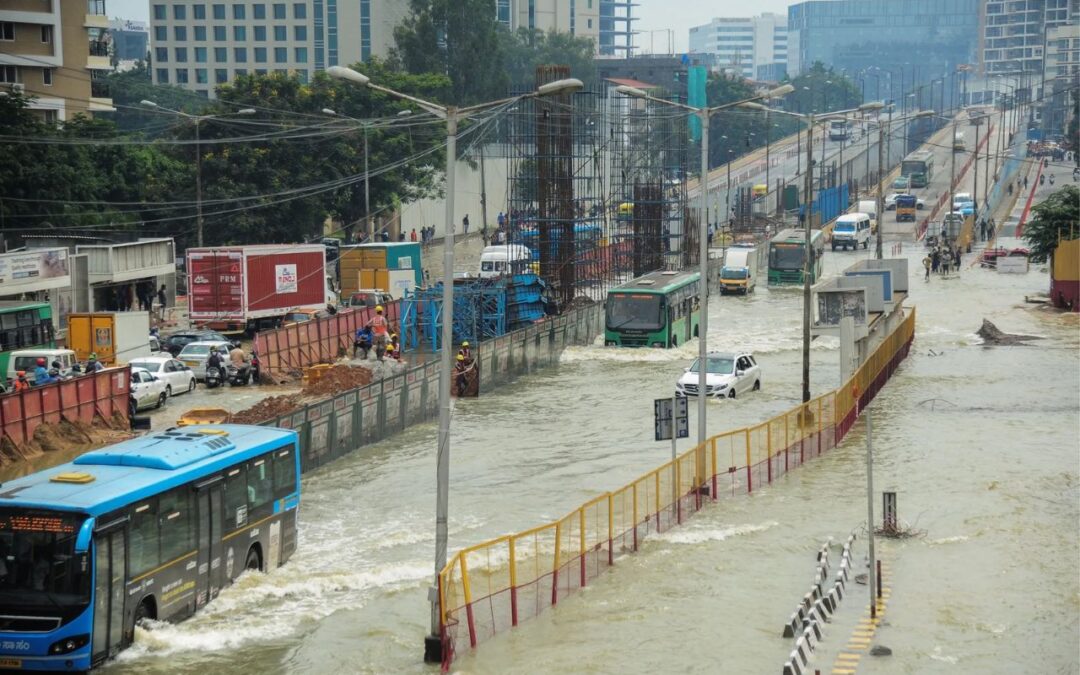Synopsis: Bengaluru’s top flood safe areas in 2025 have upgraded drainage and higher elevation that protect these areas from severe monsoon flooding. These neighbourhoods are now being favoured by buyers and investors who now prioritize safety and resilience due to the city’s ongoing flooding challenges.
Bengaluru has been attracting new residents and investors, but the city’s vulnerability to urban flooding has shifted the priorities of buyers. As the climate changes or intensifies the rainfall, neighborhoods that were once known for luxury have lately seen recurring floods, increased traffic, and even property losses. Lately, the search for a new home is around one vital question- Which areas of Bengaluru are flood safe? Therefore, this article is going to guide you through providing detailed, which would help you to identify the best place to settle with security and confidence.
Why Flood-Safe Localities Matter
This year in May, Bengaluru received over 120mm of rain in a single day, which was the city’s wettest May ever recorded in history. This caused widespread waterlogging and upended daily life in over 40 neighbourhoods of the city. Even the premium hubs like Bellandur, Whitefield, Marathahalli, Koramangala, and the tech-driven Outer Ring Road also saw submerged roads and stranded residents. And this has pushed flood safety to the top of the checklist for buyers and renters in every price bracket.
What Makes an Area Flood-Safe?
- Having effective and well-maintained stormwater drainage
- Proactive civic developments, like the new Rs 247 crore BBMP drain network in North and South Bengaluru
- A Natural elevation and distance from affected lakes
- Sustainable real estate projects that prioritize raised foundation and rainwater management
- The areas where these factors align have experienced fewer flood incidents, which has put them in the spotlight and has made them now in high demand.
Best Flood Safe Areas in Bengaluru for 2025
1. Yelahanka and North Bengaluru
Yelahanka continues to stand out in 2025 for its strong flood defences and robust infrastructure improvements. Despite previous years’ vulnerability, a new storm drain system linking the Yelahanka Lake to Jakkur Lake is now able to efficiently divert overflow and greatly reduce local flooding risk.
- Residents of Kendriya Vihar, an area in Yelahanka, confirm to witness a dramatic fall in the waterlogging issues, with zero major complaints during the city’s harshest monsoon seasons.
- Civic inspections and regular maintenance of key junctions such as Kogilu Cross and Kogilu Circle have been able to contributed to maintaining the resilience.
2. Kanakapura Road and South Bengaluru
The areas around Kanakapura Road and the stretch to Electronic City have also been known for their low flood exposure. This is due to both the geographical and sustainable investments that are being made into the drainage and road system.
- The neighbourhoods along Kanakapura Road are geographically elevated and have been benefited from BBMP’s new drain expansion and it’s ongoing cleaning programs.
- Real estate prices have remained stable, and demand for the 2BHKs is also quite high in this area, which reflects upon the strong buyer confidence in the locality’s resilience.
Also read: Top Indian States with Highest Tourism Revenue in 2025 – See Who’s Leading the Chart
3. Devanahalli
Devanahalli is a micro-market near the Kempegowda International Airport, and has emerged as another flood-safe hub because of its northern plateau position and lower density of encroached water bodies.
- The region is promoted as a risk-averse investment zone. Devanahalli has premium gated communities that emphasize flood mitigation in their planning.
4. Kodathi Village
Newer, master-planned communities like the Kodathi Village, which is located near Sarjapur, has projects such as Birla Evara which are are becoming the gold standard for flood safety:
- The developments here sit on higher ground and have state of the art drainage, water diversion, and rainwater harvesting.
- Buyers are increasingly favouring apartments and villas in these projects after sustained flooding in mainstream tech corridors and luxury hubs.
5. Vasanth Nagar
Vasanth Nagar is often believed to be one of Bengaluru’s safest and most tranquil central neighbourhoods. The timely developments done in the area, along with quality civic amenities and minimal nearby encroachments, has Vasanth Nagar a strong record of flood resistance.
Areas to Avoid: Bengaluru’s Persistent Flood Zones
While certain localities have shown great improvement, there even exists many flood-prone spots such as- Bellandur, Sarjapur Road, Whitefield, Mahadevapura, Koramangala, HSR Layout and Horamavu. Factors like frequent flooding, waterlogged streets, and disrupted property values characterize these zones, with dozens of stretches that are flagged for ongoing risk even after the mitigation efforts done made by BBMP.
What Should Homebuyers and Tenants Do?
Make sure to check BBMP’s flood hazard maps and even consult the most recent report before finalizing any kind of property decisions.
- Go for homes that provide modern drainage systems, elevated plinths, and even rainwater harvesting systems.
- Prefer developments by reputed builders that are known for their focus on sustainable urban planning.
- Leverage local knowledge and the existing residents’ reviews, along with platforms like NoBroker, to get the history of flood incidences.
Safety Rises On Bengaluru’s Housing Ladder
In Bengaluru, flood safety is no longer a secondary concern, as it is at the heart of Bengaluru’s real estate decisions in 2025. Neighbourhoods like Yelahanka, Devanahalli, Kanakapura Road, Kodathi Village, and parts of Vasanth Nagar are widely known to be the city’s top flood-safe areas, this is due to its civic infrastructure and developer vigilance. And as the city continues to grow and adapt to the changing climate, these neighbourhoods have set the standard for a secure and future-ready realty investment.
Written by Adithya Menon


